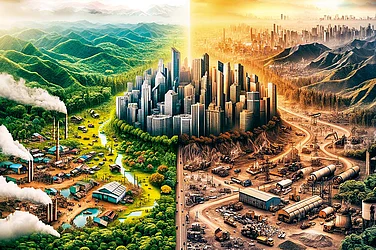While pop culture has made the saying “talk to my manager” edgy, it is an everyday reality for social media influencers, just as it is part of the maturing of the influencer management ecosystem. At a mature stage of their social media lifecycle, influencers with a sizeable follower base can find it challenging to create content and get into the nitty gritty of brand collaborations at the same time. That is when they are compelled to get organised and reach out to an influencer management agency that can help them negotiate or renegotiate deals with brands, while they focus on producing exciting content.
This process includes finalising details like how the content has to be delivered, the guidelines to be followed and user data to be shared with the collaborating company. Usually, brand collaborations cover two kinds of content—integrated and dedicated. In the former category, the creator integrates a product into the regular videos they make, while the latter is customised fully for a particular product or service.
Bargain of the Influencer
The influencer market is growing the world over, in which influencers want to define their stakes in a professional manner. India is no exception to this rule. In India, an influencer can command a remuneration for an integrated video upwards of Rs 40,000, depending on the company’s profile and their own social media reach. The charges for a dedicated video are often doubled, since the creator has to build a property specifically for a brand. While helping influencers crack such deals, an agency also helps creators widen their clientele and reach out to more brands.
Amit Mondal, the founder of Pulpkey, an influencer marketing company that works with over 200 brands, is bullish on the industry’s potential. “The global influencer marketing market size was valued at $4.6 billion in 2018 and was projected to grow by more than 25% annually from 2019 to 2025. There will be more than 10x job opportunities in this space for people who do not even need to complete the typical education cycle,” he states.
Rattling off more numbers, he adds that there are 4.2 billion social media users globally, of which 200 million are creators and 500 million are part of the passion economy which allows individuals to monestise their skills. “The creator economy in India has flourished tremendously over the past three to five years with the evolution of over 30% new creators,” he notes.
As delighted as these influencers are with their journeys and remuneration and growth in the sector, keeping up with the constant demand for creative work can be exhausting. Sanjyot Keer, who became famous with the fourth season of MasterChef India, says that while an influencer’s revenue increases drastically every year with brand collaborations, the cost of creating content that resonates with the audience is also going higher. Keer’s Your Food Lab has about 5.2 million followers on Facebook and 3.73 million on YouTube.

Filmmaker Neel Salekar, better known for his Marathi content under the aegis of Just Neel Things, recalls working with YouTubers before testing the waters. During the pandemic, when he decided to strike out on his own, he did not get many followers.
The learning curve was tough, but by sticking it out, Salekar has amassed 1.1 million followers on Instagram. Today, he is excited to work on brand collaborations. “Once you reach a point where you can influence others, you should focus on the things others do not,” Salekar says, adding that entertaining material does not always have to be about dancing, comedy or music. “Intellectual talks and significant experiences may also amuse the audience,” he adds.
Hence, he created a different channel called Flow, where the content is related to visuals, travel and music which is intended to be therapeutic, conversational and thought provoking. In the future, he plans to try out long-format videos on his YouTube channel.
The Next Version
However, as the influencer’s influence on social media peaks, it is incumbent on them to explore other areas to retain or extend their influence. Often, many focus on just one platform, instead of replicating their influence across channels.
Mondal notes that since there is always the probability of a limited impact span, the smartest influencers have learned to build a team or start a business to monetise their followership. “Some influencers have built long-standing careers by gaining millions of followers on YouTube and Instagram channels. Influencers use this opportunity to create a business. This could include merchandise, fashion labels, fitness centers, educational institutes, gaming studios and digital agencies,” he says.
Influencer and entrepreneur Masoom Minawala feels that influencers should experiment with things like podcasts and paid memberships for exclusive content if they want to stick to social media or opt to build their own brands. She prefers to take both routes to consolidate her social media success. For example, outside of social media, she prefers to be an investor. “I personally diversify through investing and have invested in several direct-to-consumers companies,” she says.
Ranveer Allahbadia, a fitness enthusiast, seems to do what Minawala recommends for influencers. His fitness channel BeerBiceps has 4.3 million subscribers on YouTube and two million on Instagram. Though he is less popular on Facebook and Twitter with 440,000 and 460,000 followers respectively, he does not ignore these channels. He recommends creators to have a two-to-three-year runway to ride the unpredictable waves of the social media industry. Walking the talk, he started a talent management agency in collaboration with Monk Entertainment’s Viraj Sheth in 2018 and plans to invest in more start-ups.

If influencers want to stay relevant today, reinvention is the name of the game. Vaibhav Pathak, co-founder of digital marketing agency TGB Troop, quips that in the past, social media influencers would post whatever caught their fancy, often gaining notoriety in the bargain. Now, he adds, they have the option of being well informed from the word go as, among other things, they can sign up for training programmes to hone presentation and content curation skills, in which his company plays a role. “This can help them learn how to begin their journey as creators. To that end, we are developing a quintessential course for people aspiring to become creators,” he adds.
Along with reinvention collaboration is key for those who stay with content. Keer, for example, is exploring the production space aggressively. “We recently released our first sponsored series Chef It Up, backed by Licious, which garnered over 10 million views within a few days. This is in addition to our collaboration with other content creators like actor Niharika N.M., YouTuber Kiran Dutta, comedian Rahul Dua and vlogger Mithilesh Patankar,” he says.
Social Satisfaction
Over the past decade, Minawala has seen the social media influencer sector chart an interesting course from skyrocketing growth within a few months to phases where things were slow and steady. While this varies from influencer to influencer, it ultimately boils down to the nature of their content and the timings at which they post their content.
“When I first went to the Cannes Film Festival three years ago, the love and admiration from my viewers translated into a boost in followership on social media. More recently, even when we launched #MasoomTakesFashionWeek, the community multiplied within a short period,” she points out.
Abhiraj Rajadhyaksha and Niyati Mavinkurve, the couple which creates digital content as Abhi and Niyu, too measure the trajectory of their journey in terms of actual on-ground impact of their videos. A freelance ad filmmaker, Rajadhyaksha launched the Following Love page on Facebook in 2019 after the duo travelled across India to find 100 heartwarming stories of change, positivity and inspiration and came up with their #100ReasonsToLoveIndia series.
Last November, after the couple made a video about stem cell registry on the National Cancer Awareness Day, over 40,000 people signed up to be part of the registry. “To think a video can save people’s lives is crazy. It is a collective effort here,” says Mavinkurve.
The intoxicating recognition notwithstanding, most influencers know that their existence comes with a limited shelf life. If they do not reinvent their content and themselves consistently, they risk saturating themselves and becoming monotonous. The smart ones have already started to build a fuller digital life—one click, one photo and one post at a time.






























